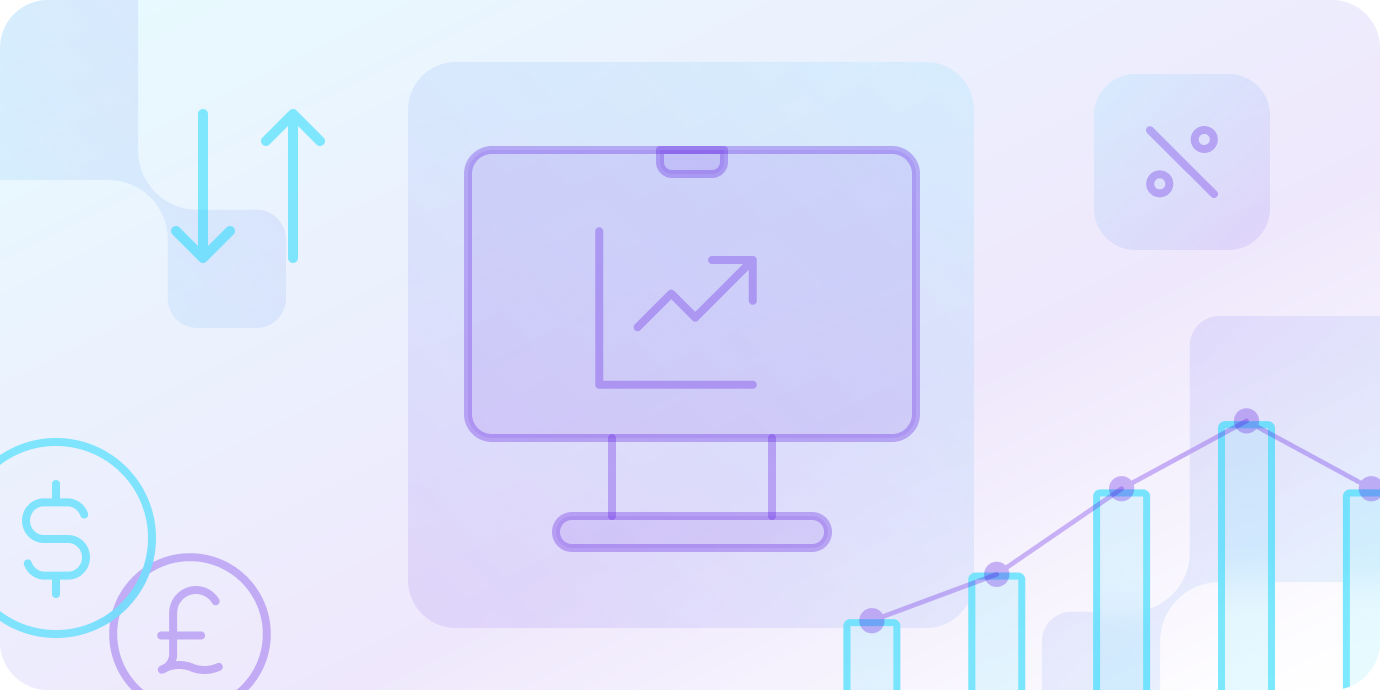How Inflation Impacts Subscription-Based Businesses in 2025

In 2022, inflation soared globally due to events like the Russia-Ukraine conflict and energy market shocks. Now in 2025, inflation rates remain high in many regions, continuing to pressure consumer behavior and business strategy alike.
Inflation continues to shape consumer behavior in 2025, with global rates still elevated due to lingering supply chain disruptions, ongoing geopolitical instability, and shifting energy markets.While some prices rise and others fall, inflation refers to a general increase in the cost of goods and services over time, ultimately reducing the purchasing power of money. This economic pressure has led consumers to rethink their spending, forcing SaaS companies to adapt their strategies to stay competitive and retain customers.
What Is Inflation and How Does It Affect SaaS Businesses?
Inflation means that money buys less over time, and customers become more selective with their spending. SaaS companies relying on predictable revenue models are seeing shifts in customer priorities, with a rising risk of churn.
How PayPro Global’s MoR can help:
As a Merchant of Record, PayPro Global helps SaaS businesses stay financially resilient by managing global payments, compliance, and tax challenges—all while ensuring a seamless customer checkout experience.
Global Inflation: Then vs. Now
In 2022, inflation soared globally due to events like the Russia-Ukraine conflict and energy market shocks. Now in 2025, inflation rates remain high in many regions, continuing to pressure consumer behavior and business strategy alike.
How Inflation Impacts Subscription-Based Consumer Behavior
Consumers are canceling subscriptions at higher rates in an effort to control spending, contributing to what analysts call “The Great Unsubscribe.” As subscription prices rise, these services are often the first to go.
1. Demonstrate Your Value to Consumers
Value is the primary driver of subscription loyalty during tough times. Consumers want to know they’re getting their money’s worth—and they’re quick to cut services that no longer deliver meaningful ROI.
PayPro Global enables easy access to detailed subscription payment analytics, helping you identify and act on what type of campaigns bring the most value to your customers.
2. Focus on Customer Experience
A frictionless, personalized customer journey is crucial to retaining subscribers during economic stress. SaaS companies must understand and respond to what their customers want—before someone else does.
From global checkout optimization to real-time support, PayPro Global ensures your users enjoy a smooth and trustworthy experience at every touchpoint.
3. Personalize and Differentiate Your Offering
A. Tailor Your Services to Your Customer’s Needs
Knowing your audience and refining your product to match their needs increases perceived value and retention.
With advanced subscription management tools, PayPro Global empowers you to deliver the right offer to the right customer at the right time.
B. Offer Carefully Planned Choices
Offering a few well-thought-out options increases conversion and minimizes customer decision fatigue.
PayPro Global supports flexible pricing models and dynamic product configurations, so you can test and implement the options your customers prefer.
eCommerce Partner
Thrive with the industry's most innovative all-in-one SaaS & Digital Goods solution. From high-performing payment and analytics tools to complete tax management, as well as subscription & billing handling, PayPro Global is ready to scale your SaaS.
Sell your SaaS globally with PayPro Global!
4. Optimize Convenience & Save Your Clients’ Time
Speed and convenience are top priorities for today’s consumers. A subscription product that saves time is more likely to remain on a customer’s “essentials” list.
PayPro Global handles all back-end billing logistics and ensures fast, secure global payments—making it easier for customers to buy and renew with minimal effort.
5. Diversify Your Offering
A. Diverse Product Lines
Offering more products or versions helps protect against churn and attracts a broader range of customers.
PayPro Global allows you to launch new products effortlessly across multiple markets with full tax, compliance, and transactional support—so you can scale faster.
B. Pricing Tiers
Tiered pricing helps customers stay on board, even when budgets tighten.
With flexible pricing structures and localized billing, PayPro Global lets you offer customizable plans that resonate with users around the world.
6. Subscription Models Allow for Smaller Price Increases
Small, incremental price increases are less likely to trigger cancellations than large, sudden jumps. Smart pricing strategies can keep revenue steady without scaring off loyal users.
PayPro Global simplifies price changes with automated billing updates and transparent communication tools—ensuring smooth transitions for both your team and your customers.
How PayPro Global Helps You Stay Competitive
With our localized payment strategy, PayPro Global helps you keep your product relevant and top of mind for customers across the globe. But more importantly, our Merchant of Record (MoR) model takes full responsibility for the complexities of global SaaS commerce, allowing you to focus 100% on building and scaling your business.
As your Merchant of Record, PayPro Global becomes the legal seller of your product to end customers. This means we handle:
- Global tax compliance (VAT, GST, sales tax)
- Regulatory and legal responsibilities in each market
- Localized checkout experiences in 200+ regions and currencies
- Payment processing and fraud prevention
- Chargeback and dispute management
- Revenue collection, reconciliation, and payout
Unlike typical payment processors or billing platforms, our full-stack MoR solution removes the burden of managing financial infrastructure, while still giving you full visibility and control over your customers and pricing. We act as your strategic commerce partner—not just a tool.
This model is especially crucial during periods of inflation or market instability, as it gives you the agility to enter new regions, test pricing models, and protect your margins—without risking non-compliance, payment failure, or costly overhead.
Book a call today to learn how PayPro Global’s MoR solution can unlock your full revenue potential, simplify global operations, and help you scale with confidence—even in uncertain times.
eCommerce Partner
Thrive with the industry's most innovative all-in-one SaaS & Digital Goods solution. From high-performing payment and analytics tools to complete tax management, as well as subscription & billing handling, PayPro Global is ready to scale your SaaS.
Sell your SaaS globally with PayPro Global!
Conclusion
Inflation will continue to shape how consumers interact with digital products, especially in the subscription economy. The good news? Businesses that adapt strategically, innovate boldly, and demonstrate clear value will not only survive—but thrive.
PayPro Global’s Merchant of Record platform is built for this challenge, helping SaaS companies build resilience, reduce churn, and seize growth opportunities—no matter what the economy throws their way.
FAQs
How does inflation affect my subscription business?
Inflation forces customers to cut costs, which increases subscription cancellations and churn. As money buys less, customers drop services they see as non-essential. To survive, you must prove your product’s value is too high to lose.
What is the best way to retain subscribers during inflation?
Demonstrate undeniable value. Focus your efforts on the customer experience and clearly communicate how your service saves users time or money. When budgets are tight, customers only keep services that deliver a clear and significant return on investment.
How can I raise prices without losing customers?
Use small, gradual price increases instead of large jumps. Communicate the change in advance and tie it to new features or improvements. Offering different pricing tiers also allows customers to downgrade to a cheaper plan instead of leaving entirely.
Ioana Grigorescu
Ioana Grigorescu is PayPro Global's Content Manager, focused on creating strategic writing pieces for SaaS, B2B, and technology companies. With a background that combines Languages and Translation Studies with Political Sciences, she's skilled in analyzing, creating, and communicating impactful content. She excels at developing content strategies, producing diverse marketing materials, and ensuring content effectiveness. Beyond her work, she enjoys exploring design with Figma.
-
1.Explore PayPro Global's Solutions: See how our platform can help you streamline your payment processing and boost revenue.
-
2.Get a Free Consultation: Discuss your specific needs with our experts and discover how we can tailor a solution for you.
-
3.Download our Free Resources: Access valuable guides, checklists, and templates to optimize your online sales.
-
4.Become a Partner: Expand your business by offering PayPro Global's solutions to your clients.
- SaaS companies are impacted by inflation because it alters customer behavior and raises churn risk, necessitating flexible tactics.
- By showcasing value, emphasizing customer experience, and broadening their product offerings, SaaS companies may fight inflation.
- Through the management of international payments, compliance, and customer experience, PayPro Global's MoR solution assists SaaS companies in navigating inflation.
Get the latest news



